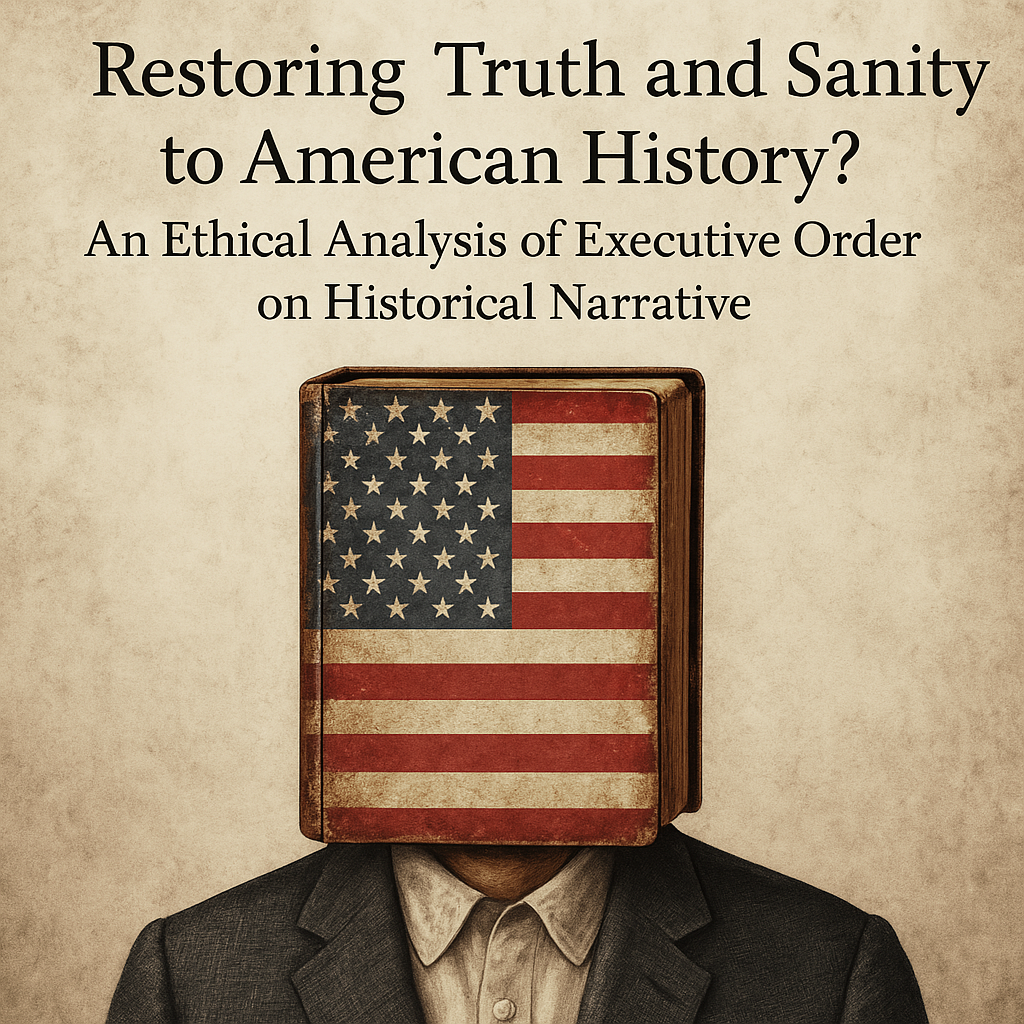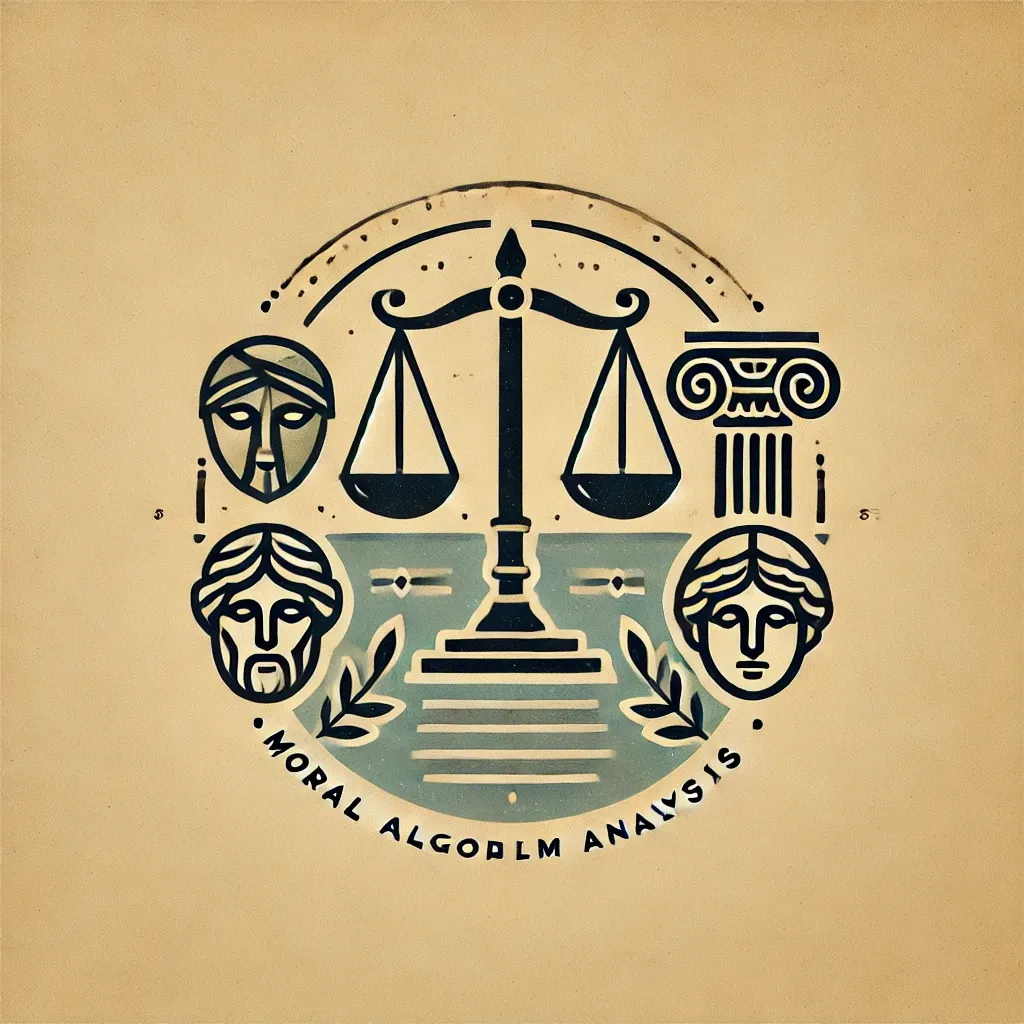Restoring Truth or Rewriting Memory?
Trump’s 2025 Executive Order reshapes public history by prioritizing patriotic narratives over critical perspectives. This article analyzes its ethical risks, questioning whether it cultivates informed citizens—or loyal subjects.

An Ethical and Civic Examination of the March 27, 2025 Executive Order
On March 27, 2025, President Donald J. Trump issued Executive Order 13999, titled "Restoring Truth and Sanity to American History." The order mandates sweeping changes to the narratives presented at federal museums, monuments, and parks—especially targeting the Smithsonian Institution. Exhibits that address systemic racism, gender identity, and power structures are labeled as "ideological" and divisive, while the order calls for a return to narratives that celebrate the greatness of the United States and its founding principles.
This article critically examines the Executive Order through the Trivium method—Grammar (definition), Logic (systems analysis), and Rhetoric (ethical reasoning)—informed by John Adams’ Moral Algorithm, John Rawls’ Veil of Ignorance, and Aristotle’s Virtue Ethics. The goal is to evaluate not only the content of the order, but the civic implications of legislating historical memory.
Grammar: What Does the Executive Order Say?
The Executive Order outlines the following:
- Cultural and Historical Narratives: Museums and monuments should no longer present themes that critique American history through race, gender, or class-based frameworks. The order explicitly denounces the Smithsonian’s recent exhibits as promoting harmful ideologies.
- Policy Enforcement: Federal funding and appointments to governing boards (e.g., the Smithsonian Board of Regents) will be used to ensure compliance. Institutions are expected to align with the administration’s vision of national pride.
- Restoration Projects: Independence Hall and National Parks are to be restored in time for the 250th anniversary of the Declaration of Independence, with an emphasis on American exceptionalism.
In essence, the order defines "truth" as a version of history that is celebratory, unified, and ideologically sanitized.
Logic: What Are the Systemic Consequences?
Let’s examine the broader implications using a systems thinking lens:
1. Adams’ Moral Algorithm: Common Good vs. Private Interest
John Adams wrote that government must be “for the common good; for the protection, safety, prosperity and happiness of the people—not for the profit, honor, or private interest of any one man, family, or class of men.”
By this measure, the Executive Order serves more as a political weapon than a civic reform. It privileges partisan ideology over a shared pursuit of historical understanding, replacing civic education with curated nostalgia.
2. Rawls’ Veil of Ignorance: Is This Policy Just?
Rawls asks us to consider justice from behind a "veil of ignorance"—as if we do not know our social position, race, or gender. Would this version of history be fair if you were a Black American? An Indigenous person? A woman? An immigrant? The erasure or minimization of systemic injustice would likely be viewed as exclusionary and unjust.
3. Aristotle’s Virtue Ethics: Does This Cultivate Good Character?
Virtue is formed by practicing honesty, courage, and humility. A sanitized history fosters hubris and denial, not ethical reflection. According to Aristotle, education should cultivate the moral character of citizens. A nation that teaches only its triumphs and hides its tragedies is preparing not thinkers, but followers.
4. Modern Monetary Theory and the Cantillon Effect
While MMT emphasizes that governments issue currency and should focus on real resource management, the Cantillon Effect warns that who receives money first matters. Here, funding is used to shape culture: those closest to executive power determine which historical narratives are elevated, concentrating cultural authority in the hands of the politically dominant.
5. Ostrom and Subsidiarity: Are Local Voices Empowered?
Elinor Ostrom championed community-based governance, while the principle of subsidiarity holds that decisions should be made at the lowest competent level. This order imposes top-down control over historical memory, weakening the autonomy of curators, educators, and local communities to present contextually rich, inclusive histories.
Rhetoric: What Kind of Society Does This Produce?
History is not just a reflection of the past—it is a blueprint for the future. What kind of citizens does this policy mold?
- Citizens who are taught to obey rather than to question.
- A public trained in pride, but not prepared for reckoning.
- A society that denies its wounds, and is therefore unequipped to heal.
Public institutions are not meant to comfort the powerful, but to educate the public. When government dictates historical truth, it steps closer to epistemic authoritarianism: control not just over law, but over meaning.
As John F. Kennedy warned:
“The greatest enemy of truth is very often not the lie—deliberate, contrived, and dishonest—but the myth—persistent, persuasive, and unrealistic.”
Final Reflection: Truth or Myth?
This Executive Order forces us to choose:
Do we want history to make us feel good, or to make us wise?
One choice builds citizens. The other builds loyal subjects.
In the words of historian James Baldwin, “Not everything that is faced can be changed, but nothing can be changed until it is faced.”
To truly honor our nation’s progress, we must tell the whole story—even the painful parts. That is not shame. That is patriotism.
